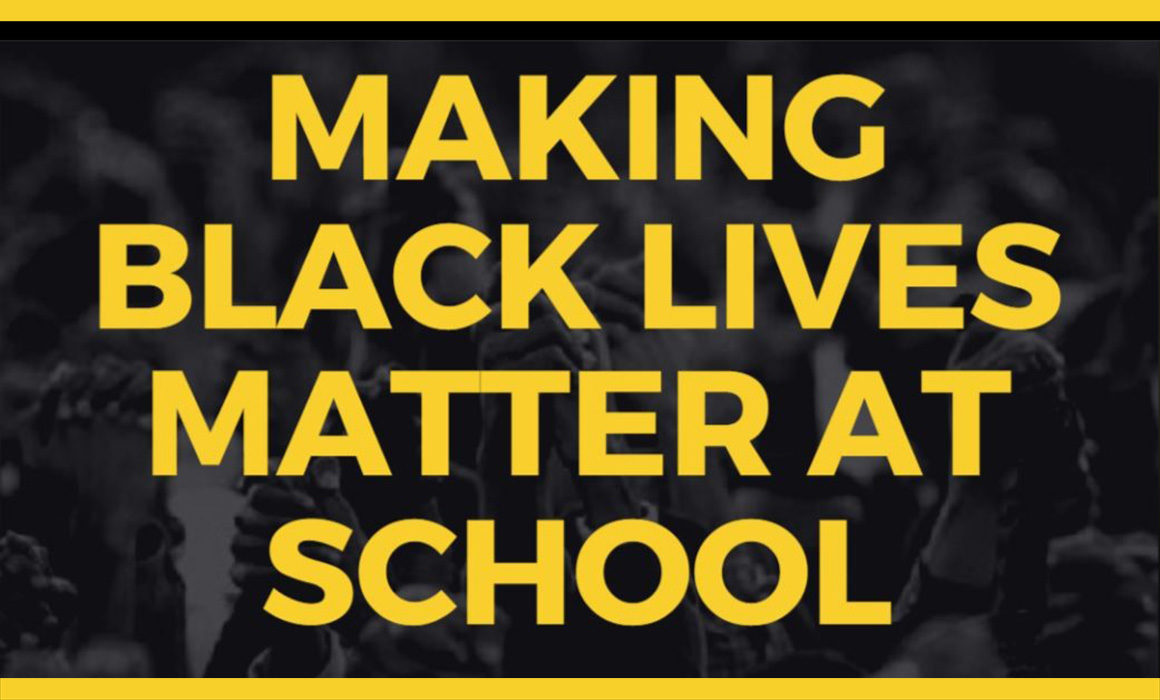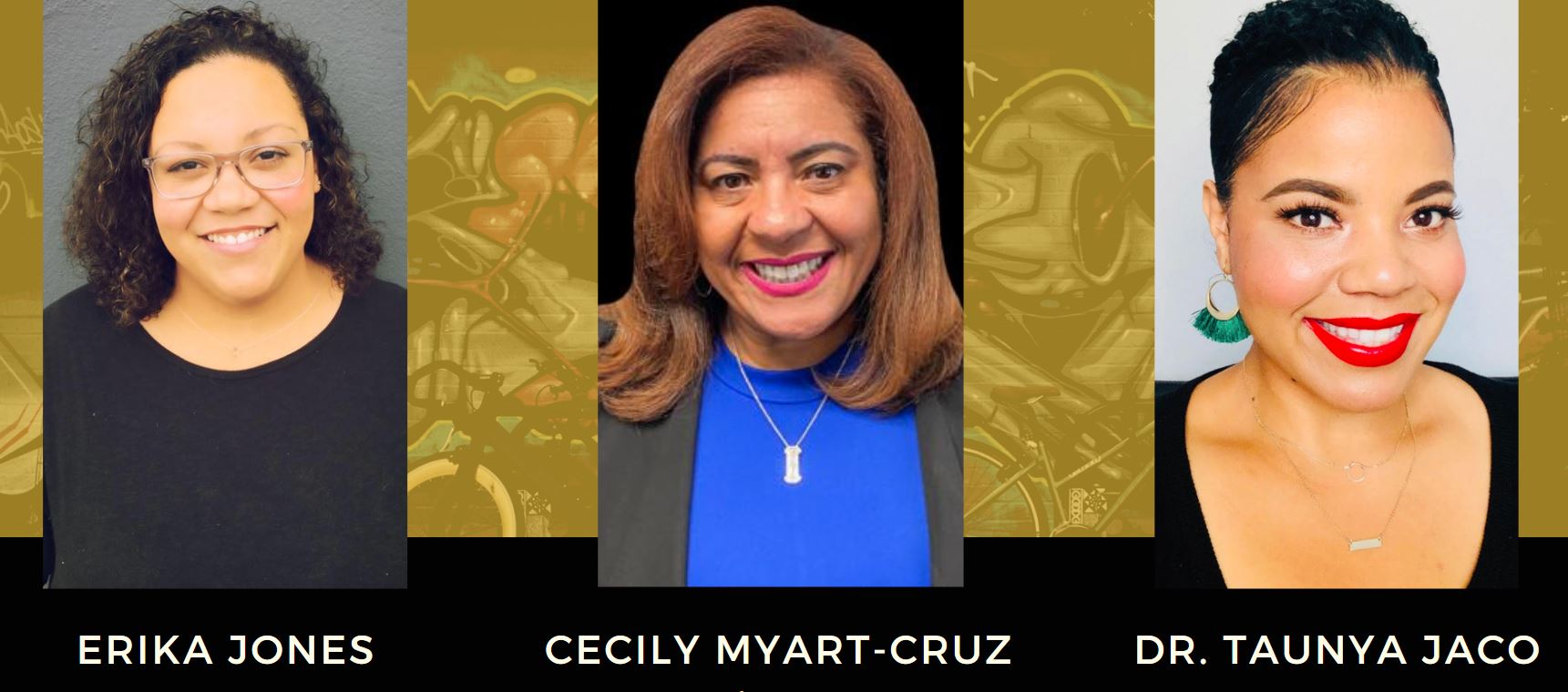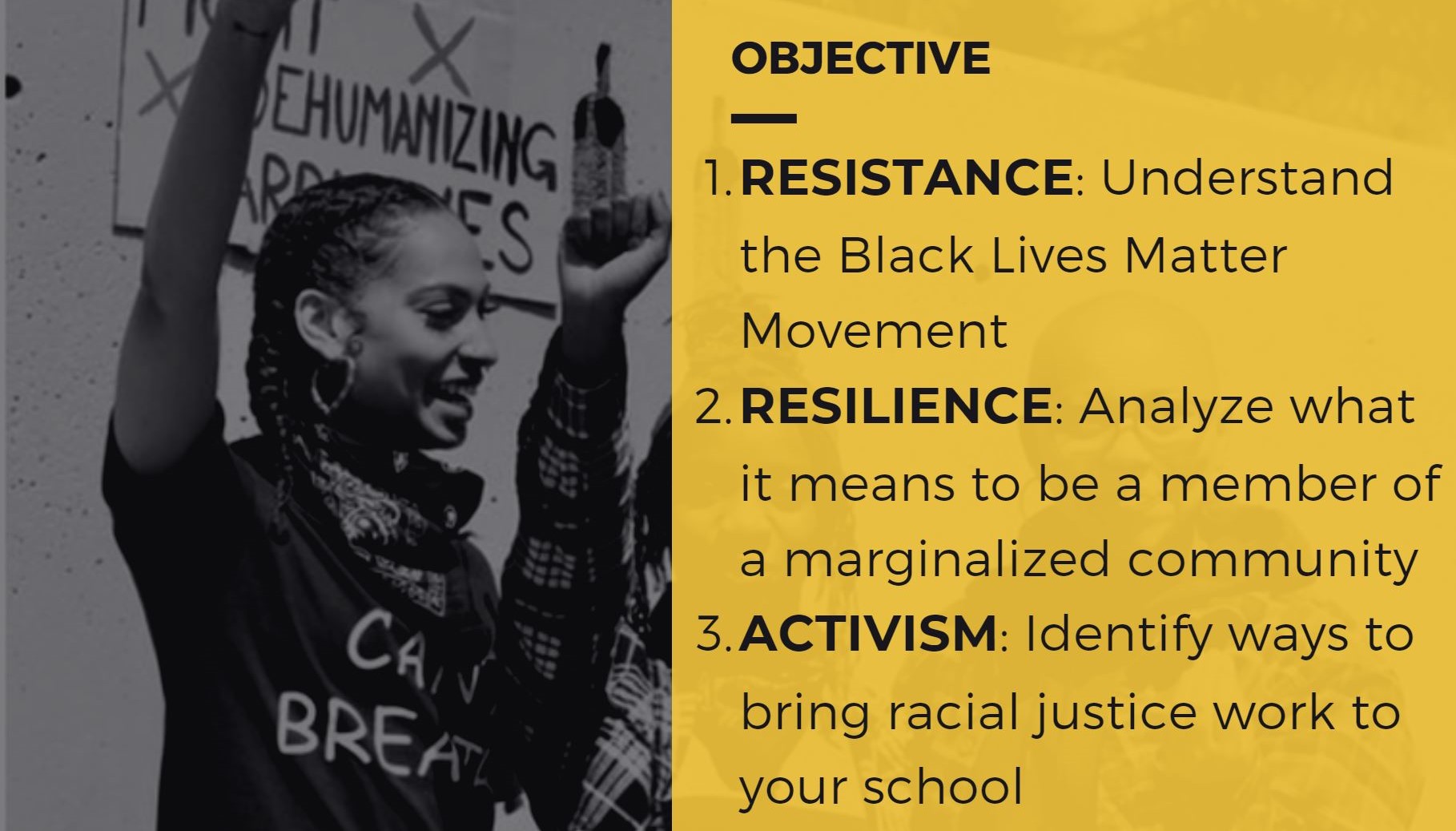
“When you center the most marginalized and create an educational environment where they can succeed, you have created an environment where all can succeed.”
—Erika Jones, CTA Board member
With educators and communities coming together nationwide to ensure that Black students can live, grow and thrive with support and love, two CTA members have developed a training to help educators show that Black lives matter at school.
CTA Board member Erika Jones and United Teachers Los Angeles President Cecily Myart-Cruz developed the training for the NEA Leadership Summit in 2016, highlighting the work done by UTLA’s Racial Justice Taskforce to facilitate tough conversations around race and racism in education. The task force was formed following the 2014 killing of Michael Brown by a police officer in Ferguson, Missouri, which spurred the growth of the Black Lives Matter movement.

CTA leaders Erika Jones and Cecily Myart-Cruz developed the training for all members. Taunya Jaco recently joined them as a facilitator.
“We developed the UTLA Racial Justice Taskforce and noticed that spaces for educators to talk through racial justice issues and begin unpacking what it means to be an anti-racist educator were nonexistent,” says Jones, a UTLA member. “Students and community members were far ahead in their understanding of the Black Lives Matter movement and the impact it could and would have on classrooms.”
Jones and Myart-Cruz have trained thousands of educators nationwide, tailoring each session to the needs of their audience, focusing on breaking down misconceptions of Black Lives Matter and racial justice, and centering the work of educators in love and empathy. The training asks educators to analyze what it means to be a member of a marginalized community and identify ways to bring racial justice to their schools.

A slide from the training, which asks educators what it means to be a member of a marginalized community and how they can bring racial justice to their schools.
“Showing that Black lives matter at school is really about centering our most marginalized students. When you center the most marginalized and create an educational environment where they can succeed, you have created an environment where all can succeed,” Jones says. “We push educators to examine their own practices and existing school policies from curricular choices to discipline polices. These reflective conversations are geared to plant seeds where educators then take agency to continue the work.”
The goal of the broader Black Lives Matter at School movement (blacklivesmatteratschool.com) is to spark ongoing critical reflection, honest conversation, and impactful actions in school communities for people of all ages to engage with issues of racial justice. Black Lives Matter at School organizers have designated 2022 as a Year of Purpose. Educators, students and parents are encouraged to participate in ongoing work and reflection throughout the school year.
Jones and Myart-Cruz’s workshop dovetails with this goal. “We must make Black lives matter at school every day,” Myart-Cruz says. “When we talk about Black Lives Matter at School, it’s beyond wearing a shirt. It’s beyond having a Zoom background. It’s beyond having a poster. Educators, what are you embodying?”
The training has evolved and expanded over time. It now embraces the community schools model and provides more support for members to continue the work after the training. Jones and Myart-Cruz have continued to facilitate during the pandemic, leading Black Lives Matter at School trainings with educators at El Cerrito High School, with health and human services professionals who work in multiple school districts, as part of CTA’s Tuesday Takeovers for Racial and Social Justice, and in numerous CTA service centers. The duo was recently joined by CTA Board member Taunya Jaco as a facilitator.
Jones hopes educators take away from this training:
- A better understanding of racial justice movements and the role educators can play in these movements.
- A historical understanding of how Black students are marginalized within the public school system and the connection with all marginalized groups.
- Actions they can do at the classroom, school site and local levels to ensure that Black lives do in fact matter.
“The training starts an important discussion and breaks down racial narratives that deep down we all have to face. With the awareness, members can be more thoughtful and intentional about creating change on their campus,” Jones says. “Though we give examples of where to begin, undoing decades of disinvestment in Black youth will not be answered in one training. Coming into the space, educators need to understand that this is a first step, but they have to continue walking if sustainable change is going to happen.”
The Black Lives Matter at School Year of Purpose asks educators to reflect on their own work in relation to anti-racist pedagogy and abolitionist practice, persistently challenging themselves to center Black lives in their classrooms. Jones says educators need to create spaces to listen to students and provide and support opportunities for students to lead.
“What that looks like can vary. For UTLA, it meant hosting student forums where parents, educators and community members actually had to stop and listen to the lived experience of our Black students,” says Jones. “It also meant supporting student groups and providing opportunities for student groups to lead.”
Jones and Myart-Cruz are offering the training at the Equity and Human Rights Conference and the Good Teaching Conference in March; for more information, visit cta.org/conferences. Members can also reach out directly to set up trainings by emailing ejones@cta.org.
The Discussion 0 comments Post a Comment